Please bear with me as this is my first time working with filters.
I am trying to scale down the voltage from my piezo to a voltage which my ADC can read (from >100V on the piezo to 0-5V on the ADC inputs). Reading older threads on voltage dividers and ADC inputs, it was suggested that I use a buffer after my voltage divider in order to create a low impedance output for the ADC.
EDIT: The two resistors should be swapped, did not notice it until it was pointed out to me.
(I used a capacitor to represent the piezoelectric because I couldn't find a piezo symbol in Tina)
I have been testing my circuit with a much smaller impact that produces voltages of ~1V on the piezo, and have noticed that there is a huge amount of noise on the output of the buffer.
Orange in the above picture is the original signal, measuring directly across the piezo
Green in the above picture is the signal after it leaves the buffer
Figuring that it was an issue of high frequency noise, I attempted to filter the data in Python, using a 1st order butterworth filter with a cutoff of 10kHz and a sampling frequency of 50MHz (The sampling frequency of the oscilloscope)
Red is the original signal, blue is the buffer output after going through a lowpass filter (This was a seperate hit on the piezo, so it doesn't match the previous picture)
Considering that I need the ability to do this in real time, I needed to build an analog low pass filter. From my understanding, the calculation is that
$$ F_c = \frac 1 {2\pi RC} $$
So I used \$ F_c = 10kHz \$ , C = 0.1uF and R = 150\$\Omega\$ in order to get an actual \$ F_c \$ of 10.6Khz.
However, instead of getting a nice, smoothed out signal like in Python, I get this:
The orange is the signal from the piezo and the green is the output of the buffer. As you can see, the low pass filter seems to have had smoothed out the actual signal while leaving the noise behind!
Now what I want is the following:
- What am I doing wrong that is causing the low pass filter to filter out the signal?
- Why is the buffer output so noisy? I chose this buffer because it is supposed to be unity gain stable.
- What could I do to alleviate the noise and keep the signal? Would using an active filter instead help?
Thank you, and sorry for the wall of text.
